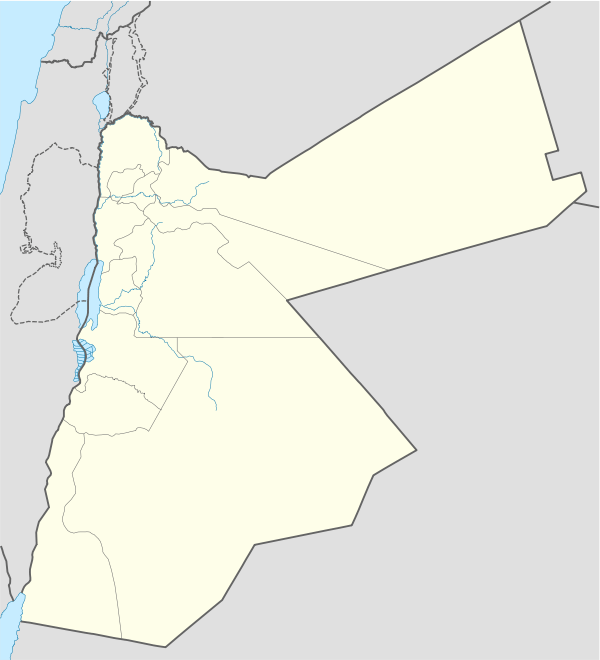Montreal (Crusader castle)
| Montreal Castle | |
|---|---|
| قلعة مونتريال | |
| Shoubak, Jordan | |
|
Montreal Castle and the Shoubak visitor Center | |
|
Montreal Crusader Castle | |
 Montreal Castle | |
| Coordinates | 30°31′53″N 35°33′36″E / 30.5313°N 35.5600°E |
| Site information | |
| Open to the public | Yes |
| Site history | |
| Built | 1115 |
| Built by | Baldwin I of Jerusalem |
Montreal is a Crusader castle on the eastern side of the Arabah, perched on the side of a rocky, conical mountain, looking out over fruit trees below. The ruins, called Shoubak or Shawbak in Arabic, are located in modern town of Shoubak in Jordan.
History
The castle was built in 1115 by Baldwin I of Jerusalem during his expedition to the area where he captured Aqaba on the Red Sea in 1116. Originally called 'Krak de Montreal' or 'Mons Regalis', it was named in honour of the king's own contribution to its construction (Mont Royal). It was strategically located on a hill on the plain of Edom, along the pilgrimage and caravan routes from Syria to Arabia. This allowed Baldwin to control the commerce of the area, as pilgrims and merchants needed permission to travel past it. It was surrounded by relatively fertile land, and two cisterns were carved into the hill, with a long, steep staircase leading to springs within the hill itself.
It remained property of the royal family of the Kingdom of Jerusalem until 1142, when it became part of the Lordship of Oultrejordain. At the same time the centre of the Lordship was moved to Kerak, a stronger fortress to the north of Montreal. Along with Kerak, the castle owed sixty knights to the kingdom. It was held by Philip de Milly, and then passed to Raynald of Châtillon when he married Stephanie de Milly. Raynald used the castle to attack the rich caravans that had previously been allowed to pass unharmed. He also built ships there, then transported them overland to the Red Sea, planning to attack Mecca itself. This was intolerable to the Ayyubid sultan Saladin, who invaded the kingdom in 1187.[1] After capturing Jerusalem, later in the year he besieged Montreal. During the siege the defenders are said to have sold their wives and children for food, and to have gone blind from "lack of salt." Because of the hill Saladin was unable to use siege engines, but after almost two years the castle finally fell to his troops in May 1189, after which the defenders' families were returned to them. The Mameluks later captured and rebuilt it.
Structure
Little remains of the original Crusader fortifications. Although it has never been fully excavated, it is known that there was a set of three walls, which partially remain. The towers and walls are decorated with carved inscriptions dating from 14th century Mameluke renovations, but the inside is ruinous. Near the gatehouse, a well with over 350 dangerous, slippery, spiral, rock-cut steps descends to a spring.
The castle is currently being investigated by an Italian archaeological team from the University of Florence[2]
See also
- Vaux Moise, an outpost of Montreal
References
- "The Crusades" by Hans Mayer
- "The Age of the Crusades: The Near East from the Eleventh Century to 1517" by Peter Holt
Notes
- ↑ Eddé, Anne-Marie “Saladin” trans. Jean Marie Todd Harvard University Press 2011.ISBN 978-0-674-28397-8
- ↑ http://www.shawbak.net (in Italian)
| Wikimedia Commons has media related to Montréal Castle. |

